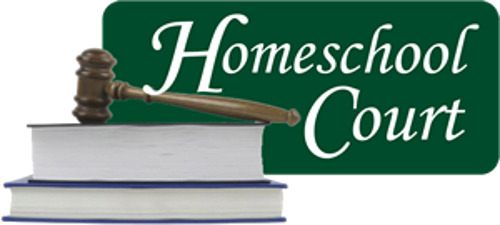As parents we only have 18 years to teach what really matters. Before we know it, our kids will be adults who need essential soft skills to survive in this crazy world. The trouble is, teaching the soft skills needed for adulting can be difficult to simulate in a kid’s world. This is where money comes in. You can use a child’s natural desire for stuff to teach the important skills they will use daily.
Healthy Adults Plan
Saving money and planning how to use it teaches discipline and patience so put some money in your kid’s hands by giving him/her an allowance. But, wait…it is not that simple. Giving out money without teaching how to structure the money is nothing more than a handout. And handouts are the last thing we need to teach our children to expect. See my Apply It section on just what a plan will look like at any age.
Giving your child his/her allowance should not be something undertaken lightly. You must see it from his/her perspective to understand that allowance day is like payday to a child. Forgetting to pay him/her or not having cash (yes, you must give cash early in the process so he/she will learn to visualize the inflows and outflows) will only trigger a scarcity mentality that could lead to poor choices later in life. Instead, treat the allowance activity like you would a class. And because it is a class with an intentional goal of teaching specific skills, don’t feel like you have to involve all the siblings. You can choose a certain age or ages to give an allowance in order to give the proper attention to the subject matter.
Now that you are getting the picture, I am sure you are wondering how much to give. This is the big question. The amount is different for each family, but generally $.50 to $1.00 per year of age should be given weekly. For example, my 6 year old would get between $3 and $6 per week. This might sound like a lot, but in my next section I will talk about the new responsibilities your child will have with all that newfound wealth.
Apply It
Ages 6-9: For these younger years set up a "Save, Spend, Give" system to use on payday. Have your child divide his/her allowance into these three categories and use a visible chart to help them track towards a goal like a large toy.
Age 10-13: With more activities and opportunities to spend, increase the allowance and budget complexity. Use this time to involve your child in your own home purchases so they can begin to see the way decisions are made.
Age 14-17 With the increase in allowance, the budget model should reflect all that is required to pay for. You can find helpful guides on the internet.
Healthy Adults are Responsible
Now that your child has some money in their pocket, let him/her pay for the things he/she wants and needs. This is the perfect opportunity to practice making wise choices and learn the pain of regret.
In the budget model, your child should divide his/her allowance into Spend Now, Spend Later (formerly known as savings), Emergencies and Give Away. Now, before you jump down to see what I am suggesting you have your child pay for remember this: you are not making him/her work for this money. You are giving the money as an opportunity to practice spending, saving and giving. It is a transfer of responsibility in order to teach the desired outcomes. For example, when my son repeatedly lost his water bottle, I required him to replace it using his Emergency Fun. Surprise, surprise…he never lost a water bottle again because he felt the pain of spending the money (even though it was my money all along).
I know this all sounds easier than it will be in real life. Believe me, I have gone through years with my son watching him spend all of his current spending money on candy, trinkets and apps. Just be patient as the lessons of regret and discernment will come along. Remember, it is far better for your child to waste money now than it will be in his/her early twenties. And no matter what, don’t give more money when he/she has spent all that was allotted. This will only give him/her a taste of credit, and that is a lesson to avoid at all costs.
Apply It
Ages 6-9: For these years, the current spending should be used for things like toys and candy. While the future spending should go towards larger goals (think Lego sets) and saving for the next stage.
Age 10-13: At this stage the horizons are broadening and the wants/needs are growing as well. Have him/her spend the current money on things like video games, apps, lost items, activities with friends, etc. It will be no surprise that the future spending money will be used for big ticket items like a car, insurance, college and more.
Age 14-17 These are the years where the rubber meets the road. Your teen will have your allowance and will also be able to earn additional money by working outside the home. At this stage he/she can handle paying for eating out, clothes, shoes, dates, supplies and sports gear. Your teen is so close to being out on his/her own, that he/she should have as much practice as possible making and managing money while you are still close by to provide wise counsel.
Healthy adults sacrifice for others
I have touched on this earlier, but I want to make sure I expand a bit. Your child should be required to take a portion of his/her allowance and use it to benefit others. A generous heart is not too difficult for young children but it will become increasingly harder for your child to part with his/her money as they get older, so begin to model generosity early.
I bet you were wondering when I would address the elephant in the room: chores. Just because I am against paying your child for chores, does not mean I am against chores. Far from it. Chores are a part of living in a household and should not be tied to compensation. As we model what adulthood is like, we set our kids up for disappointment if they have been raised to expect payment for keeping the house orderly. Also, I want to make a distinction: chores are those acts that are done for the entire family. Cleaning his/her room or picking up after his/herself is not a chore, it is an expectation.
Sacrificing yourself for the family instills a sense of purpose and connection in a child, even if on the surface all you see is grumbling.
Apply It
Ages 6-9: These littler ones should not be taken lightly, there is plenty they are able (and often willing) to do: set/clear the table, gather up the trash and vacuum are just a few examples.
Age 10-13: This is the sweet spot for chores because they are old enough to make a significant difference in the house but still young enough to be fairly sweet about it! For this age, the sky is the limit: laundry, dishes, cooking, etc.
Age 14-17 Things start to get a little dicey with this group because the school work and attitude can both be very legitimate barriers to assigning too much work. For this reason, I tend to lay off this group a little when it comes to housework and instead require them to work outside the home to earn additional money and learn how to navigate the working world.
Some final words
If you are not teaching them to be fiscally responsible, they will end up back on your doorstep with their hands out...
According to NerdWallet.com in an article entitled Supporting Adult Kids May Cost Parents $227K in Retirement:
“Many parents of children 18 and older are paying or have paid for their adult children’s basic living costs, including groceries (56%), health insurance (40%) and rent or housing outside the family home (21%). Some parents are also covering or have covered their adult child’s cell phone bill (39%) and car insurance (34%).”
This is not how you were meant to spend your Golden Years. So, let me encourage you to use these 18 years wisely and teach your child what he/she needs to know to be a responsible and ready adult. You’ve got this!
Warmly,
Charla, Artisan of Adulting
Ps- If you would like a handy reference chart to guide you in the area of allowance and responsibility by age, click here: https://beyond-personal-finance.mykajabi.com/pl/265568
FREEBIE ALERT! Pick up your reference guide here!
**************************************
 Charla McKinley graduated from the University of Texas with a degree in Finance. She went on to become a Certified Public Accountant with over 25 years working in both the corporate and private sector. While homeschooling her two children, Charla was inspired to write an interactive personal finance curriculum (www.bpfclass.com) that opens the student's eyes to the high costs of being an adult. After retiring from homeschooling, Charla continues to teach teens live in Raleigh, NC and across the country using her Beyond Personal Finance curriculum.
Charla McKinley graduated from the University of Texas with a degree in Finance. She went on to become a Certified Public Accountant with over 25 years working in both the corporate and private sector. While homeschooling her two children, Charla was inspired to write an interactive personal finance curriculum (www.bpfclass.com) that opens the student's eyes to the high costs of being an adult. After retiring from homeschooling, Charla continues to teach teens live in Raleigh, NC and across the country using her Beyond Personal Finance curriculum.Charla’s passion is teaching teens that their choices matter. She is a firm believer that in order to prepare teens for the road ahead they must be given the opportunity to practice making good (and not so good) choices using real dollars before they get out into the world and have real regrets.
Subscribe to Charla’s weekly content to get more practical and powerful tips on raising adults at www.artisanofadulting.com

































